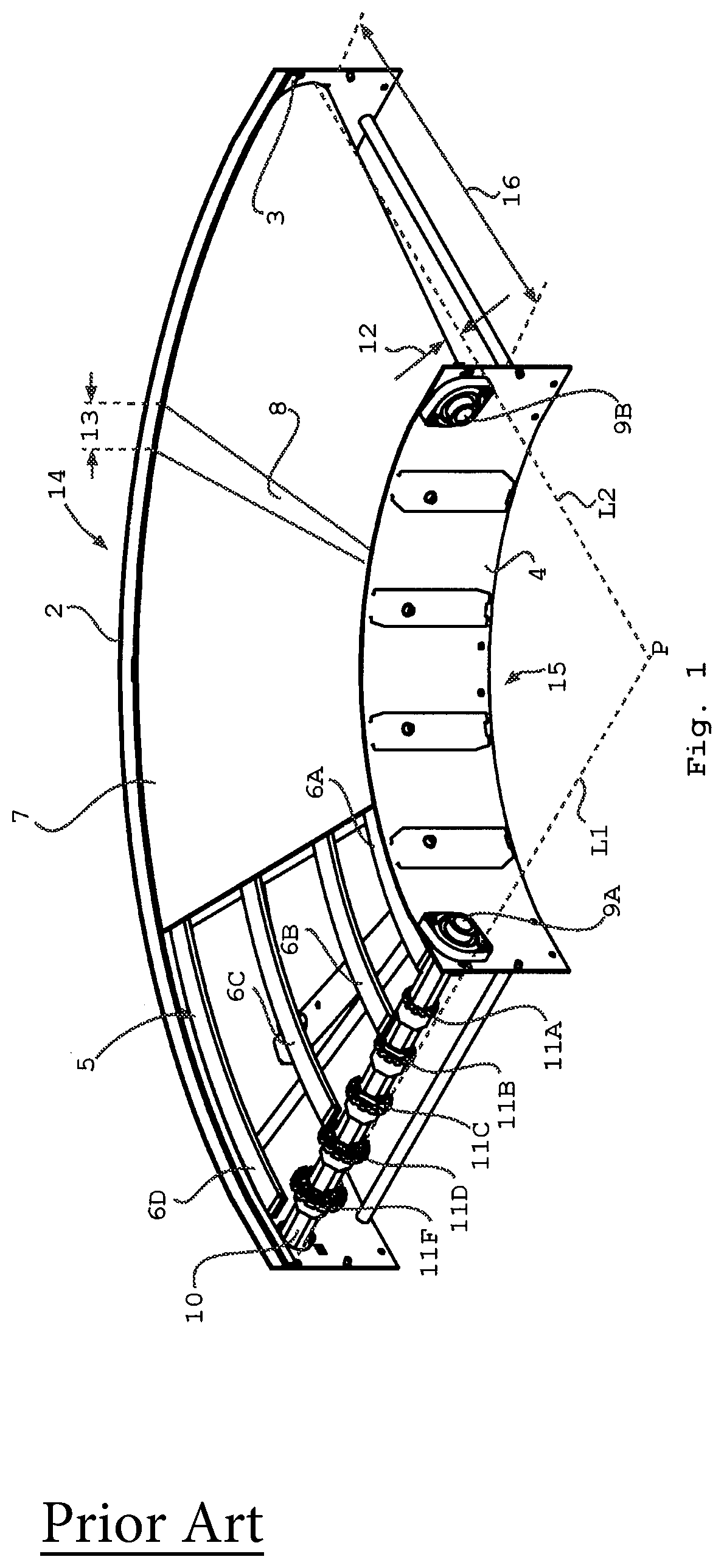Chain conveyor curve
a conveyor curve and chain technology, applied in the direction of conveyors, transportation and packaging, etc., can solve the problems of not being able to move through straight parts of the conveying system, dedicated conveyor chains cannot move in the bend, and ordinary conveyor chains are not suitable for being guided through the curve, so as to reduce friction and wear.
- Summary
- Abstract
- Description
- Claims
- Application Information
AI Technical Summary
Benefits of technology
Problems solved by technology
Method used
Image
Examples
Embodiment Construction
[0044]The figures represent specific exemplary embodiments of the inventions and should not be considered limiting the invention in any way or form. Throughout the description and the figures the same or corresponding reference numerals are used for the same or corresponding elements.
[0045]The term ring-shaped is to be considered as, yet not to be seen as limited to an open through-going space surrounded by material, irrespective of the shape. Thus the material may be in the shape of a ring around the through going space, in the shape of an oval, a square, a long hole and / or any specific form suited for the purpose.
[0046]FIG. 1 depicts a schematic perspective view of a conventional curved path conveyor 1 for small radius turns. The conveyor 1 comprises a frame 2 having two guiding edges 3 and 4. Guiding edge 3 is located on the curve outside 14 and guiding edge 4 is located on the curve inside 15. In between the guiding edges 3 and 4 is located a support surface 5, comprising a set ...
PUM
 Login to View More
Login to View More Abstract
Description
Claims
Application Information
 Login to View More
Login to View More - R&D
- Intellectual Property
- Life Sciences
- Materials
- Tech Scout
- Unparalleled Data Quality
- Higher Quality Content
- 60% Fewer Hallucinations
Browse by: Latest US Patents, China's latest patents, Technical Efficacy Thesaurus, Application Domain, Technology Topic, Popular Technical Reports.
© 2025 PatSnap. All rights reserved.Legal|Privacy policy|Modern Slavery Act Transparency Statement|Sitemap|About US| Contact US: help@patsnap.com



